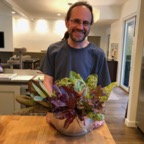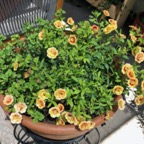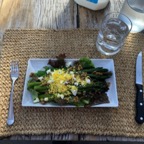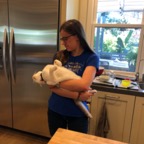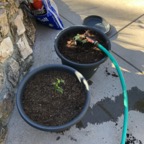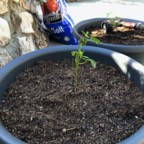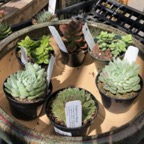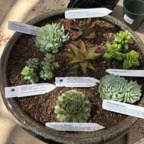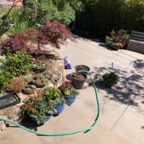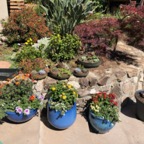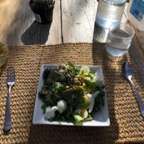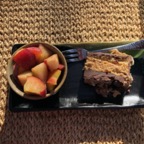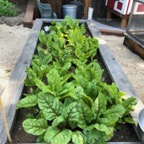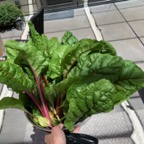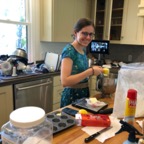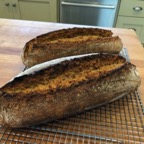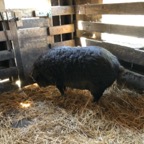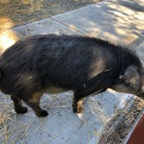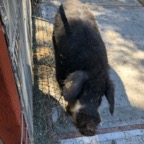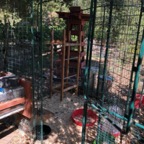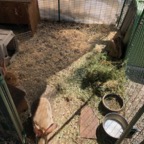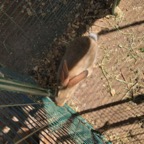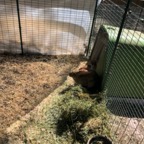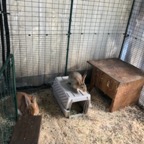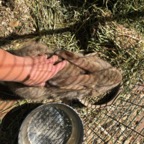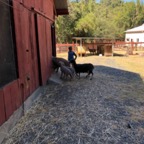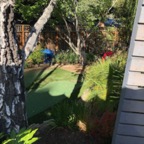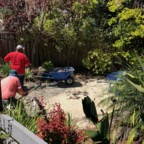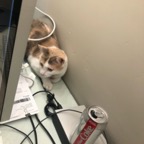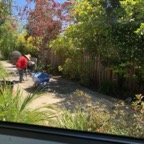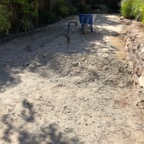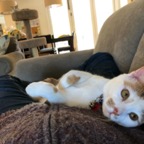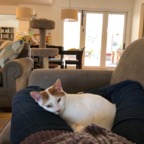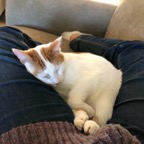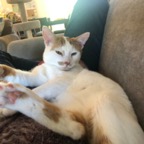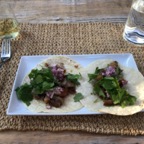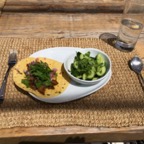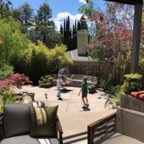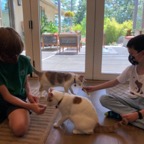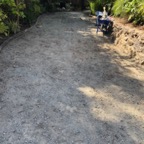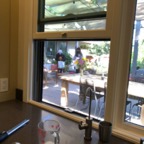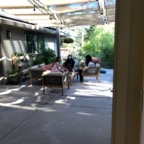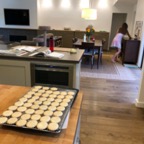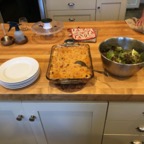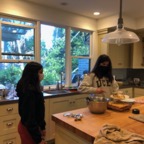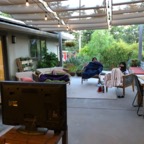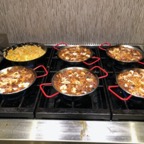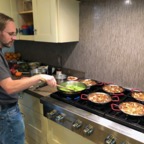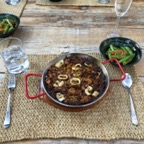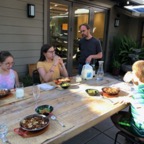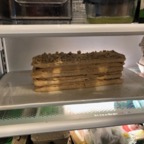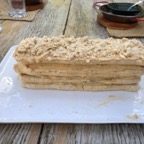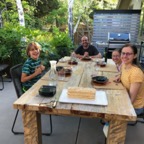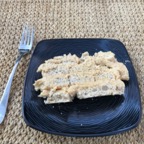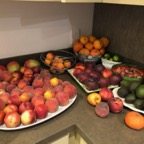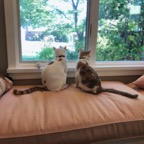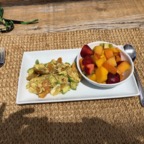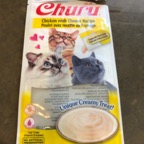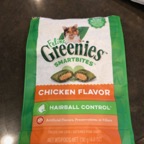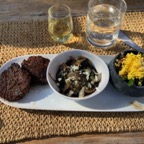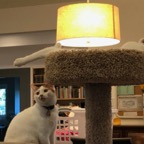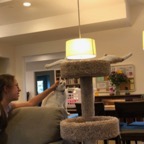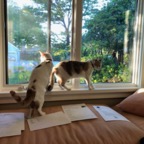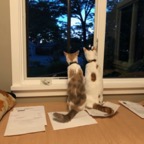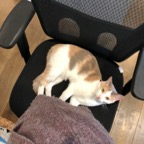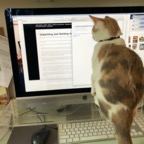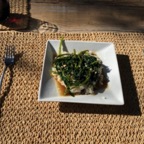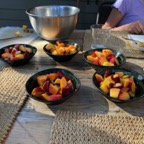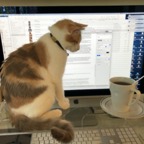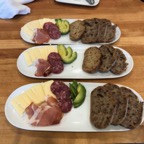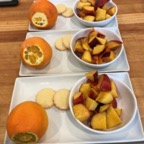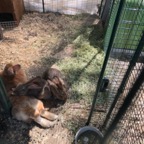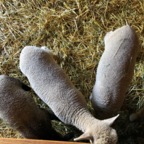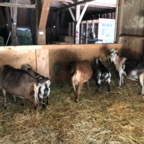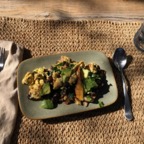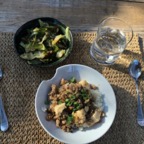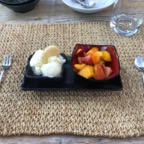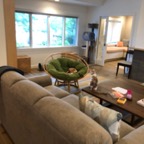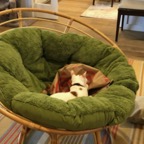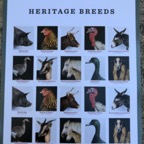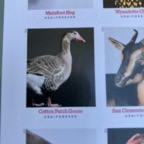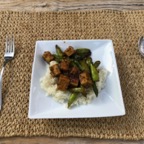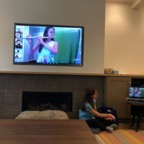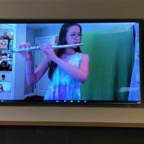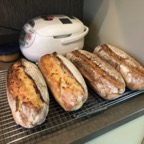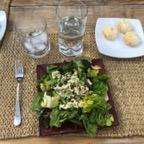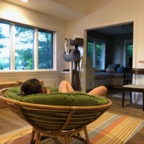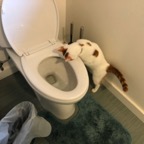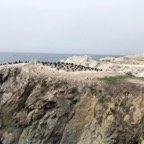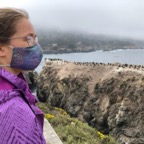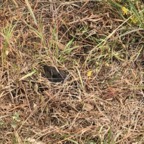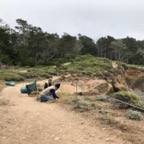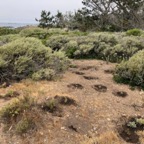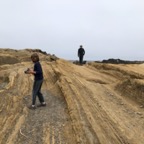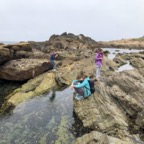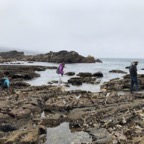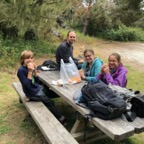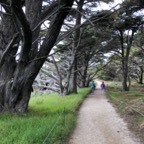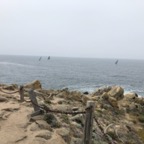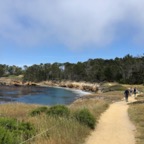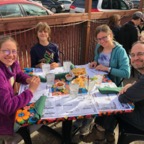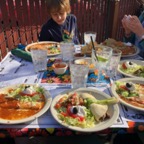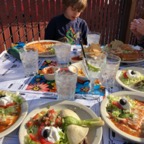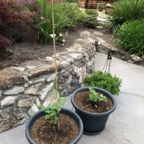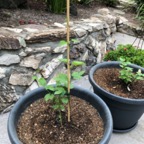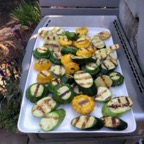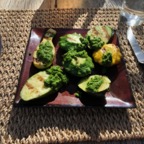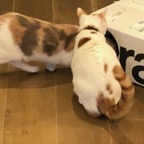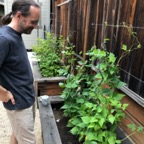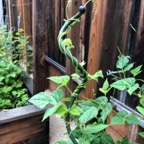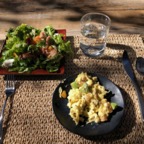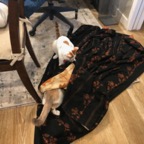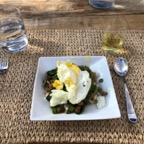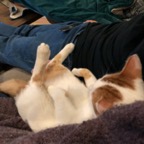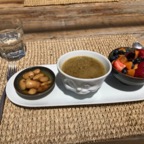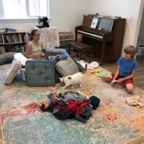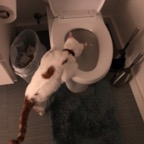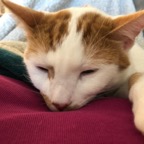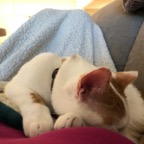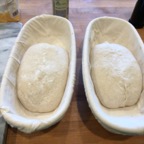Late May to Early June
After the Hitchners’ visit we just had a couple more weeks until the end of school.
The big news during this period is that the girls got their first shot! The bracket opened to age 12 and up, so Mike took them both in. What a relief!
Now we just needed to get Owen vaccinated. We had no idea when the vaccine for younger kids would open. We kept our summer plans fluid, hoping that Owen might get vaccinated before the end of the summer, at which point we could take a trip… but I asked our pediatrician for a possible timeline and she said that while she had no official date, her understanding was that the under-12 vaccine would not be available until the fall. This was a disappointment, because it meant that Owen would be unvaccinated and vulnerable all summer, which drastically curtailed any travel that we might do.
After careful consideration, we made plans to go to Massachusetts, as it had a very good vaccination record, and public and government support for masking and social distancing, unlike many other states which were openly fighting masks and social distancing. We decided to spend a week in Boston, visiting the historic sites related to the Revolution, and then a week in Concord with my sister, Leslie. That trip would take place at the end of the summer.
The big household news is that work started on the putting green during this time! The putting green had been the single most important change that we wanted to do to the house. The previous owner had put in this little putting green below the patio, with three holes in it, and fake grass. We weren’t golfers, and were somewhat bemused by the whole thing.
We had spent many months figuring out what we wanted to put there instead, and finally settled on a small, shade-friendly lawn and a hanging chair over some flagstones. We discussed the plan with Rigo, our gardener/landscaper who had done the landscaping for the previous owners, who helped us with our decisions – showing us rocks that would match the retaining wall in the back, and diverting us from having a steppingstone path, as that would bisect the lawn and turn it into a walkway instead of a place of its own (this decision also meant that he’d make less money, as stone is expensive, so we trusted his judgement on this).
Finally, after much waiting, our project made it to the top of his queue and the workers arrived! They tore out the putting green and its concrete substrate, laid new irrigation (the pipes were all mostly in place as this area had been a lawn before it had been a putting green), put in new dirt! Later in June they would lay the sod and stones, but we’ll get to that later.
We took a lovely day trip to Point Lobos in May, hiking all around the park, from the south to the north – that’s our new, expanded hike which is much longer than any single trail. We had picnic at tables on the south side, and explored the tide pools and interesting sedimentary layers that you can see over there. We also watched a long-distance sailing race go by Cypress Point! We read about it online afterwards – we were witnessing the Monterey to Santa Barbara leg of the race, wow!
As we started heading back we realized that there was an accident on highway 17, which meant that we would be stuck in traffic for hours. We decided to spontaneously stay for dinner in Santa Cruz, somewhere where we could eat outside due to the pandemic. We found a reasonable Mexican-American place which reminded me of the Mexican-American style places from when I was a kid (you know the type: enchilada/taco/burrito + rice + beans on a giant plate). After dinner, traffic was still backed up, so we went to the big used-and-new bookstore in downtown Santa Cruz, at about 7 p.m. We stayed there a while, then made our way back over the mountain. The traffic was still heavy and stressful, but it was better than it had been earlier in the evening.
In other news, Lela made madeleines with her French class over Zoom! She does a French cooking project with them about once a month. She didn’t have a madeleine pan, so used a muffin pan, and they were delicious!
Ellen, Gaetano, and Paolo came over for lunch at the end of May! We had a great conversation over a multi-course lunch. I was delighted to see them. It was great to feel that things were opening up a bit as the vaccine rippled its way through the population. We could start seeing family again!
The kids also had friends over. Ellie had Sofia and Vibha over, and I served their favorite, macaroni and cheese casserole, then they watched a movie on the patio. This dish has become very popular among Ellie’s friends and is in high demand when they come over for dinner.
I also got individual paella pans for a second attempt at paella. My earlier attempt had been more difficult than expected because of the large distance between flame and pan on the outdoor grill. This meant that the paella didn’t get much heat and took a lot time to cook. So I got individual mini paella pans and made it on the stove, and that went MUCH better. Way more heat and better control, and it was delicious, too!
I continued with my gardening in late May and early June: I put a pot on a stand between the couch and armchair on the patio, and ran an irrigation line to it (challenging), to have a nice plant incorporated into the seating area.
I also re-planted a pot behind the armchair. This meant ripping up plants that had been put there by the previous owners, so that was a milestone. So far I hadn’t messed with the plants they’d put in, but this pot was scraggly and needed to go, and I was confident I could put something prettier there. So I replaced the plants, which was quite empowering.
I read several books about succulents and planted several pots of those. Originally I wanted them to cover an irrigation line that went over the wall to water the blue pots on the stairs, but then I did more succulent pots to make an emplacement and cover more bare, hard-to-irrigate areas.
I’d planted my new hops plants in BIG plastic pots on the cement circle, to get them started in full sun, and boy, did they take off! They shot upwards in late May. I had to get them supports for all their tendrils.
Lastly, in farm news, Deer Hollow Farm got new pigs! They got two Mangalitsa pigs, a heritage breed known for its flavorful meat and fat. It originally comes from Hungary, and there are only two breeders on the West Coast, one in the North Bay and one in Washington state. Lisa got them from the North Bay breeder. Mangalitsas are a smaller breed of pig, in keeping with the farm downsizing its breeds to make it more friendly for school field trips, and pigs of this breed have curly, wooly hair.
For much of the 20th century, pigs were bread to have leaner and leaner meat, to respond to market demands for less fat. This also resulted in pork being quite dry, because it had so little fat. So traditional, pre-20th century recipes didn’t work with the new style of pork. However, there is now a movement back the other way, toward more flavorful meat, and the celebration of heritage breeds, and the Mangalitsas are part of that movement.
The female pig stopped eating once she arrived, unfortunately, and Lisa found herself having to coax her to eat, with raw chicken eggs and other treats. This pig was apparently able to subsist on almost no food. The male, in contrast, ate everything, just like a good pig should. So getting the female to eat was an ongoing bit of drama that lasted many weeks up at the farm.
In the last bit of farm news, one of the new, aggressive roosters attacked the big orange rooster. This was a shame, because the big orange rooster was quite calm and friendly, and in fact we didn’t even know he was a rooster for a long time, because he didn’t show a lot of those aggressive rooster behaviors. But I did hear him crowing under his breath one day last year. So he was the main rooster for a while, but then one of the new ones from this year attacked him, hard, pecking at his eyes and the skin of his face. Lisa tried to keep him in there, because once a rooster is removed it’s very hard to reintroduce him to the flock, which means he must either be disposed of or kept separately, but she soon had to rescue him. His face had become a blood mess and she was afraid he’d been blinded. He was such a sweet rooster, though, that she decided to keep him separately in the orchard, just outside the office in the rabbit’s old quarters, with a couple hens to keep him company. So putting the orange rooster (affectionately called Big Bird) and the hens away became one of Owen’s jobs.
Meanwhile, up in the rabbit quarters, the Flemish giant mother was returned with her babies! A volunteer takes the rabbits when they’re about to give birth, and oversees the birth and handles the babies until they are several weeks old, then returns them to the farm (always a big day!). The babies were super cute as always, though Flemish giant babies are never SMALL. By the time we see them, at about 4-6 weeks old, they’re already the size of a regular rabbit.
